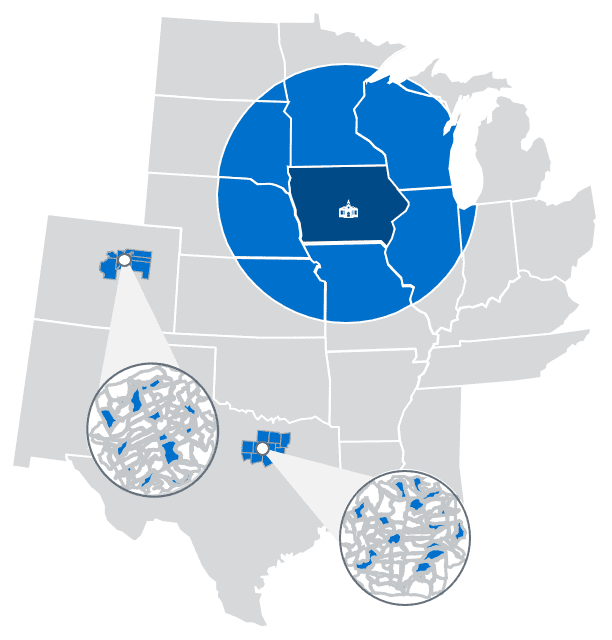As a result of demographic shifts, more and more universities are looking to new markets to recruit their next class. While this can be a promising strategy for some universities, it’s important to develop a thoughtful approach to each of your different markets. You shouldn’t expect the same behavior from prospective students in your tertiary market as you do in your primary market, for example. Your markets may vary based on income, willingness to relocate for higher education, and many other factors.
With these differences in mind, Drake University has developed a useful framework for understanding their primary, secondary, and tertiary markets. Drake’s primary market is Iowa, as the university is located near the center of the state and many of their students come from within the state. Their secondary market is made up of specific metropolitan regions in adjoining states: Minneapolis, Milwaukee, Chicago, St. Louis, and Kansas City. Their tertiary markets are two handpicked metropolitan areas within a one-day drive of the university.

Drake University didn’t arrive at these three enrollment markets by chance. They identified these different markets based on demographic data and college-going behavior they observed. For each of these markets, Drake has a different strategy, evident in the goals they set and how they strategically purchase prospective college student names.
Core Market: Iowa
- Goals: In their core market of Iowa, Drake University wants to fulfill its mission of access and diversity.
- Name purchase strategy: To fulfill this mission, Drake purchases the name of every qualified candidate in the state.
Secondary Market: Neighboring state metro areas
- Goals: There aren’t enough students in their core market to fill a class, so Drake looks to their secondary market to increase headcount.
- Name purchase strategy: Drake has found higher yield rates in these neighboring areas among students with middle-range test scores, so they purchase names in a slightly narrower test score range.
Tertiary Market: Two one-day drive metro areas
- Goals: Drake’s primary goal for these tertiary markets is net tuition revenue.
- Name purchase strategy: To accomplish this goal, Drake targets zip codes with both high median household income and population growth and purchases names within a still narrower range of test scores.
- Supplemental strategy: They have paired this name purchase strategy with the addition of two regional recruiters, one in each of their two focus metro areas.
This exact approach to specific markets likely won’t work for every university or college, and we don’t advocate that every enrollment team divide markets in the same way. However, enrollment leaders should ensure their university has clear goals, and a strategy for achieving those goals, for each market it recruits in.
